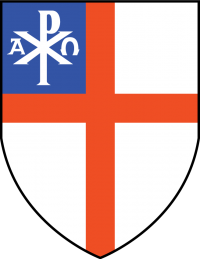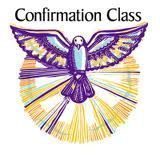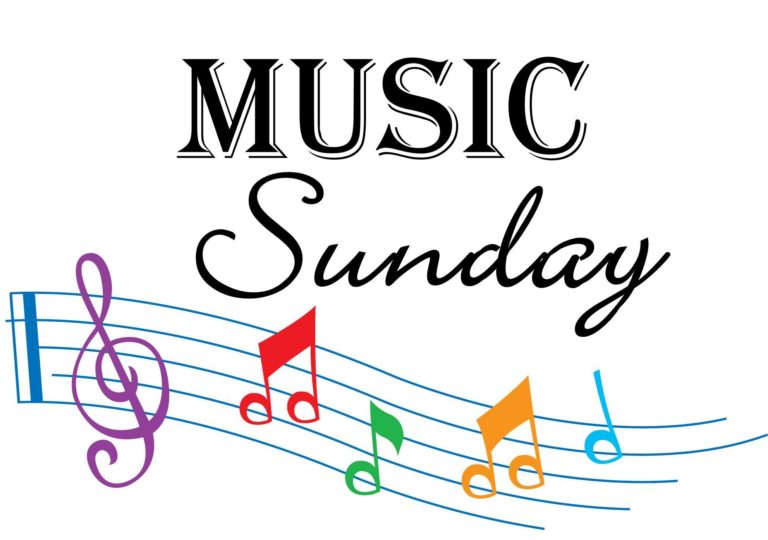Confirmation Class #2 April 18 2021
St. Michael The Archangel 2211 Margaret Wallace Rd Matthews, N.C. 28105
Rev. Michael Cawthon, St. Michael the Archangel, Rector (2021)
2nd class –
SECTION A
Anglican Church & the Reformation Period:
Note: Since most will not ever be taught or read of those who assisted in keeping the faith of our fathers alive and true let us take a few moments for an overview:
- So who were the ones that protected the established old traditions while formalizing the new?
The initial introduction to THE CAROLINE DIVINES:
see: http://anglicanhistory.org/caroline/index.html
In the late 16th century and flowing through the 17th century was a period known as The English Renaissance. Many names spring quickly to mind beginning with Queen Elizabeth I who appreciated the aesthetic (concerned with the appreciation of beauty,) and associated with this beauty are names like Spenser, Shakespeare, Sidney, Marlowe, Raleigh, Byrd, and Tallis. The flowering of growth did not stop with Elizabeth’s death, but continued through the reigns of James I and his son Charles I. Not overshadowed by them were some of the “Caroline Divines” like Donne, Herbert, Andrewes, Cosin, Frank and Taylor, whose sermons were among the best of literature ever written and which upheld catholic (universal antiquity): latin – catholicus; from greek adjective katholikos of values of worship and doctrine. T.S. Eliot, himself a fine poet and dramatist and winner of the 1948 Nobel Prize in Literature of the twentieth century, even commented on Andrewes’ sermons, and described them as ranking “with the finest English prose of their time.”
The English Church owes so much to these Divines, special attention we will give to Lancelot Andrewes as he became a mentor to many. T.S. Eliot again described Andrewes as having “the voice of a man who has a formed visible Church behind him, who speaks with the old authority and the new culture,” thus Andrewes is considered by many to be the first great preacher of the English Catholic Church.” The Divines promoted the Catholic faith in the Reformed Church, and when persecuted for this offense during the Interregnum (as government was basically paused) through deprivation and/ or in exile; they patiently bore it for their Mother Church. Any suffering was considered worthwhile as it was but a taste of Christ’s sufferings at Calvary.
Today, at what now seems a time of crisis within the world and within the Anglican Communion, it would be good for Anglicans, and all Christians, to reflect on what the Caroline Divines’ legacy was and is today to the English Church. The first thing the “Divine’s” insisted upon was obedience to the faith as handed down by the Fathers of the Church (the historic Church) from Apostolic time and which was and is upheld by Holy Scripture, certainly not anything of modern interpretation.
The Incarnation: Was and still is a mystery
The central doctrine of that historic faith was and is still today the Incarnation, as the Eternal Word took humanity’s flesh. A flesh viewed by the historic church Mary, who was undefiled, was viewed as the New Eve of a new creation. The Incarnation along with the doctrine of the Trinity, are great mysteries of the Church.
“That Heaven should thus come down to Earth,
that God should become Man;
that the Father of Eternity should be born in time”
never ceased to amaze Lancelot Andrewes.
The Incarnation for Andrewes and all Caroline Divines, as described by Dean Church at the end of the nineteenth century, meant living in “adoration, self-surrender and blessing, and in awe and joy of welcoming the Presence of the Eternal Beauty, the Sacrifice and Reconciliation of the world.”
It was therefore as much a sensuous experience as spiritual which further separated them from the Puritans who focused more on Christ as their “captain”, leading them in the battle against sin and all evil in this world (their doctrine of humanity of being “Total Depravity”.)
For this totality of using all of mankind’s senses, guides the Anglican Faith to be concerned with not just learning the Word, but with living it within their lives. Not just hearing, but doing; and not doing out of fear but for their love of Christ.
One aspect of the Incarnation is the Divines emphasises on the kenosis (the self emptying of Jesus own will and becoming entirely receptive to God’s divine will – of Jesus becoming human.)
PODCAST on Andrewes sermon concerning Angels at
https://brewswithandrewes.podbean.com/ Episode Five)
Like the early Fathers, the Divines were full of wonder that the Logos would be as Frank put it: “poorly born; in a stable amongst beasts; poorly wrapped in rags, poorly cradled in a manger, poorly bedded upon a lock of hay, poorly attended by the ox and ass, poorly every way provided for; not a fire to dress him in the depth of winter, only the stream and breath of the beasts to keep him warm; cobwebs for his hangings, the dung of the beasts for his perfumes, noise and lowings, neighing and brayings, for his music; every thing as poor about him as want and necessity could make it.”
The Eucharistic Sacrament:
Closely associated with the Incarnation is the Sacrament of the altar. As Andrewes preached at Christmas 1618, the Child in the cratch will lead us to Him in the Sacrament, which outwardly like the cratch seems of little value but inwardly what treasure. “Of the sacrament we may well say Hoc erit signum,” but through the sign, “invenietis Puerum, ye shall find this Child”. For finding His flesh and blood, you cannot miss but find Him too.” Christmas 1612 saw Andrewes preaching, “And this day they first came together, the Word and flesh; therefore, of all days, this day they would not be parted.” Two years later he concluded his Nativity sermon with this commendation. “This then I commend to you, even the being with Him in the Sacrament of His Body – that Body that was conceived and born, as for the other ends so for this specially, to be ‘with you’; and this day,” Taylor defined this succinctly when he stated that the Crib is the “altar where first lay that ‘Lamb of God’ which was afterwards sacrificed for the sin of all the world.”
The celebration of the Eucharist for the Caroline Divines was the focus for all worship as it had been in the early Church, and they agreed with those early Fathers that it should be celebrated frequently. Those of us who attend daily Mass know how very special this is and know exactly what Andrewes meant when he stated that never are we as close to Christ as when we receive Him at the altar. Taking on almost and an angelic realm of Holiness. He and all Caroline Divines knew the phrasing of Augustine, “unless we eat the Body of Christ we cannot be the Body of Christ in this world.”
So it is not surprising that the Eucharist dominated their preaching and teaching. “The chief point is that in the Sacrament Christ himself is received.” It is our perpetual Bethlehem, the manna from heaven, and at the end of life the viaticum (Echarist given near the end of life.) At the altar is our mystical union with our beloved Lord.
A connection can be made between the Eucharist having its roots in Jewish tradition and teaching. So by the Divines by going back to the time of Christ establishing the doctrine “Christ’s Church” makes their devotion to antiquity even more relevant.
The Caroline Divines focused on:
WORSHIPING THE LORD IN THE BEAUTY OF HOLINESS. TEACHING THE FAITH OF THE FATHERS. UPHOLDING THE DOCTRINES OF THE FIRST FOUR ECUMENICAL COUNCILS. GIVING DUE HONOUR TO MARY THE MOTHER OF GOD AND ALL THE SAINTS. RECEIVING THE BODY AND BLOOD OF CHRIST OFTEN.
“Give us this day our daily bread” thus becomes not just a prayer, but a way of life and our duty. Jesus and the Jewish Roots of the Eucharist, Brant Pitre.
Discussion ended:
Some of our History in the APA
Anglicans like most Christians everywhere, follow Jesus Christ, confessing the faith of Christ crucified, proclaim his resurrection, and Anglican Ordination shares in his eternal priesthood (after the order of Melchizedek.) [i]
We are Christians, who’s elders were the Jewish people, worshipping within the Anglican Tradition. The Anglican Church has its roots in the Church of England, and along with churches in other nations around the world we all share the Church of England heritage and are part of what is called the Anglican Communion. Each national Church within this fellowship is independent of the others in matters of local governance and discipline but shares a common heritage. Heartbreakingly and sadly the once shared common understanding of Christian tradition and worship has been put in disarray, and has even disappeared, as changes in historical traditions and teachings have evolved into something new.[ii]
Our Province, the Anglican Province in America (A.P.A.) accepts the Holy Scriptures of the Old and New Testaments as “containing all things necessary to salvation,” and as being the rule and ultimate standard of truth and faith. The apocryphal books of the Old Testament – which appear in the ancient Greek translation of the Old Testament, but not in the Hebrew Bible – are used and read in our churches, but are not used as ln Roman Catholic and Eastern Orthodox Christians, to establish any doctrine. The Apostles’ Creed and the Nicene Creed, which are ancient summaries of the Christian faith derived from the time of the undivided Catholic Church, which was received, as sufficient statements of the Christian faith. The Apostles’ Creed, used in the Church’s daily worship, is especially associated with the profession of faith made by candidates in the early church for Holy Baptism. The Nicene Creed is recited during the Eucharist on feast days, proclaims the Trinitarian faith of Christians throughout the world and throughout the ages.
The sacraments ordained by our Lord Jesus Christ, Baptism, and the Lord’s Supper, are considered essential to Christian life, and worship within the Anglican tradition. Holy Baptism can be administered at any age, and the sharing of the sacramental Body and Blood of Christ in the Holy Communion takes place within the service of the Holy Eucharist, which is the Church’s chief act of worship on Sundays and Holy Days. Other sacramental rites are recognized and used in our Church but are not considered necessary for all persons in the same way that Baptism and the Eucharist are (these will be discussed later.) We consider all baptized persons to be members of Christ Church.
Some Christians are called to the ordained ministries of bishops, priests, and deacons, to serve the Church by teaching, governing, celebrating the sacraments, providing pastoral care, and in servant ministry to the world. This threefold ministry preserves and continues the apostolic ministry empowered by Christ himself, and transmitted in unbroken succession from the time of the Apostles. It is the same ministry shared by the Roman Catholic Church and the Eastern Orthodox.
The Anglican Communion believes that all truth comes from God and that new knowledge, if true, can only help our understanding of God, as we do not see a conflict between “science” and “religion.” In the interpretation of Scripture, we believe that the eternal spiritual truths are present within Scripture as defined by the Church itself. The Church, under the guidance of the Holy Spirit, is the proper interpreter of Scripture, and this process continues from generation to generation.[iii]
Anglicans believe passionately that living the Christian faith must show itself in reaching out to others, especially to those who in any way are disadvantaged or oppressed, sick, or in need.[iv] Matthew chapter 25 verse 40 ”Verily I say unto you, Inasmuch as ye have done it unto one of the least of these my brethren, ye have done it unto me. The civil rights movement is a recent example of such an issue within the United States.
The Anglican Communion possesses a deep and rich tradition of Christian spirituality and invites its members to grow in holiness within this tradition according to their individual spiritual personalities.[v] One can find as deep and rigorous a Christian discipline within Anglicanism, but not a “one size fits all” mentality. Among us, discipline is usually not imposed (but it is expected) and each person walks their spiritual journey while being guided and aided by His One, Holy, Catholic, and Apostolic Church.[vi]
Finally, Anglicans seek to “worship the Lord in the beauty of holiness”. The liturgical worship using the Book of Common Prayer is enriched by architecture, art, music, and whatever things of beauty each local congregation may be able to supply. Beautiful and inspiring worship informs and empowers our service in the world, and that service, laid before the altar, deepens our worship. In all things: we seek to glorify God and to serve Jesus Christ by serving his people in the world thus allowing His World to invade ours.
SECTION C
Important Endnotes
(Applicable End Notes – Please read as it contains vital information!!)
[i] The Christian faith, as explained by Lancelot Andrewes, is “one cannon given of God, two testaments, three symbols (Apostles’, Athanasian, and Nicene creeds), the four first councils of Nicaea I: 325; Constantinople I: 381; Ephesus: 431; Chalcedon: 451, and first five centuries and the series of Fathers therein.”
[ii] During the 1960’s, 1970’s, 1980’s until the present, Episcopalians began to make unscriptural decisions and promote unscriptural positions. First, they changed the Prayer Book and thus they changed many of the prayers, often at the expense of antiquity. Thus changed, without the full communion support – basically “on their own” a two thousand year tradition as they began to ordain women as clergy. Just like the Early Church, some Episcopalians began to teach things that are contrary to the historical teachings of the Church. Some said that Jesus is not God or that He did not rise from the dead. Others endorsed positions that are contrary to Scripture (homosexuality and abortion.)
Many concerned Episcopalians began to gather in various US cities during the 1960’s and 1970’s. They felt threatened that they would not longer to pray under a valid Bishop and be given priest which were not of the male character of Christ and that their “priest” would begin to teach things that are not part of the Traditional Faith.
Several of these people decided that in order to protect the teaching and worship of the Church, they would ask Bishops from all over the world to provide them with bishops and priests of their own as they began to set up small churches. Just as the English under Henry VIII, they did not claim to set up a new church from scratch. They received Holy Orders from bishops who succeeded the Apostles, and they taught from the Bible using the Book of Common Prayer as their guide. God provided for His Church.
These brave Anglicans were pioneers and set an example for others around the world who felt their Anglican Heritage was being changed and/or discarded. They were called “Traditionalists” and “Continuers.” St. Michael’s is one of the churches. It is a parish of the Diocese of the Eastern United States, which is under the jurisdiction of the Anglican Province in America. History; The present structure of the Anglican Province of America (APA) was erected in 1998, constituted by the Diocese of the Eastern United States and the Missionary District of the West. In 2000, the Missionary District of the West became a Diocese in its own right and in the 2008, the Diocese of Mid-America was erected in the central U.S. from the non-geographical Diocese of St. Augustine, which had come into union with the APA in 2004. The history of the APA, however, stretches back to 1968 with the founding of the American Episcopal Church (AEC) in response to the heretical teachings of Episcopal Bishop James Pike, the Social Gospel Movement in the mainline Protestant churches, and the liturgical movement spawned by the dramatic liturgical revisions of Vatican II. Our Diocese of the Eastern United States is the same diocese first erected in the old AEC, the first of the modern so-called “Continuing Churches.”
In 2017, The Anglican Province of America signed a Letter of Unity with the Anglican Catholic Church, the Anglican Church in America, and the Diocese of the Holy Cross.
[iii] Knowing this first, that no prophecy of scripture is of any private interpretation…but (by) holy men of God spake as they were moved by the Holy Ghost. [iii] 2 Peter 1:20-21.
[iv] “To make religion nothing but an auricular profession, a matter of ease, a mere sedentary thing, and ourselves merely passive in it; sit still, and hear a Sermon and two Anthems, and be saved, as if by the act of the choir, or of the preacher, we should so be, (for these by their acts,) and we do nothing ourselves, but sit and suffer, without so much as anything done by us, any effundan (pouring) on our parts at all; not so much as this, of calling on the Name of the Lord.”
Religion to Andrewes was not just something “inward” but “outward” as well. The visible church was something very real to Andrewes as it had represented the Church of Christ from its beginning, having continuity with apostolic times which had been visible throughout its history. Thus he would strive to establish the English Church upon the ground of scripture and the early church. Andrewes had a nostalgic longing for the days of Christian unity and had an understanding of the Protestant Movement within the Church of England as he wrote to Bellarmine, “The people of the reformed churches have suffered no shipwreck of the faith, they reject no creed of the old Church, they admit all.”
Having determined the Christian Faith by examining the Canonized Scripture, the early Church Fathers, and the first four ecumenical councils, Andrewes undertook the task of formalizing the patterns which he believed should prevail in the English Church. This meant that he must defend the English Church against the onslaught of Roman Catholicism, and he also must bring his defense against some of the Puritan tendencies within the Church itself. With the Puritans it could be argued that Andrewes had more of a problem with their form of government than with the essentials of religion. As there was order and structure in God’s Creation, Andrewes believed that structure and order were proper for Christ’s Church. As he observed the many changes that the Puritan’s brought to the structure of church government, which was different than the English Church, he viewed the changes as disorder and the undoing of the current church in England. This meant that he had to face the problem, as far as the English Church was concerned; of propagating the idea of the continuity of a Catholic early tradition in the Church despite the break occasioned by Henry and later Elizabeth, as he had to promote the idea of Catholicism that was episcopal, but not papal. At the same time Andrewes sought to reduce the Puritan tone of earlier Elizabethan Anglicanism. His desire was to take the historical legitimacy of both by taking the same road of the early Church.
[v] Roman charge from Cardinal Bellermine in his Responsio ad librum: Triplici nodo, triplex cuneus (1608) that a man cannot be called “Catholic” who rejects transubstantiation, the temporal claims of the papacy, and the invocation of saints. This charge opened the door for Andrewes to enter into the apologetic field in defense of the Church of England. In doing so, he continues a theme of walking a path which the early fathers of the church traveled. He sought no new doctrines or ways of worship as he responded:
“Much detriment has the catholic faith suffered at your (Church of Rome) hands; much filth has it contracted, much from which it is no disgrace to us that we revolt…This filth has lately, in some parts of the world, been washed off, and the form…originally possessed has been restored. To this faith we cling as reformed; not to your deformation of it. Our religion you miscall modern sectarian opinions. I tell you if they are modern, they are not ours; our appeal is to antiquity yea, even to the most extreme antiquity. We do not innovate; it may be we renovate what was customary with those same ancients, but with you has disappeared in novelties…Subjection to Rome, dependence on Rome this is the sum of your religion.”
He defended the church against Roman influence as well as the Puritan strain of worship within the Church. Condemning responses to the Roman Church, he referenced the past to determine the future; however, his attitude towards the Puritans was gentler:
“Andrewes had no liking for compulsion; he trusted mainly to the power of persuasion to win and control the unruly and exciting spirits about him. In one of his sermons, he draws a beautiful picture of the true prince who “leads” his people, and does not “drag” them…Our guiding must be mild and gentle…Laud represents another method, that of legal coercion…Andrewes was in favor of gentle and gradual…he trusted to the educational influence, which indeed was already very marked…more belief in human nature than Laud, and it was an evil day for the Church when his presence was withdrawn.”





